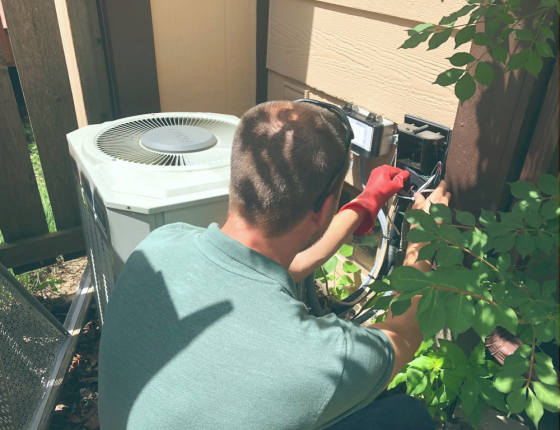Update: January 2023
An August webinar for this project is now available to view online, and the final report and deliverables are expected to be completed this winter. The study demonstrated that there is a large market opportunity for single-family homes to replace their current AC with a variety of available dual fuel ASHP products. The market is prime for transformational efforts to establish ASHPs as the new baseline technology but doing so will require increased education on the technology and more targeted incentivizing via rebates.
Update: July 2022
This project is reaching its final stages and will be presented in a CARD webinar on August 4. In addition to conversations with installation contractors, equipment distributors, and manufacturers, input from consumers looking to replace their CACs has informed an assessment of the current opportunities and barriers posed. By exploring different ASHP system archetypes (representing lowest to highest efficiency) and homeowner variables such as existing furnace and CACs, weather, and cost of electricity and natural gas, the research team found that there is an effective heat pump system available for almost every scenario. Further, the flexibility of dual fuel applications supports the ability of heat pump systems to meet the user’s objective, including cost, environmental, and comfort sensibilities — all factors that impact consumer decisions when replacing their current CAC system.
Overview
Air source heat pump (ASHP) systems are not yet cost competitive with the dominant heating residential system in Minnesota, the natural gas furnace. ASHPs also face integration challenges with existing furnaces. Manufacturers are adapting to this reality by developing new ASHP equipment to better integrate with existing systems rather than displace them.
This study will examine ASHPs as direct air conditioning (AC) replacements with no changes to the furnace, or for joint replacement with the furnace when both are needed. Using ASHPs to replace AC will provide increased cooling savings and help grow cost-effective market channels to increase familiarity and acceptance of modern HVAC technology among customers and practitioners to better prepare Minnesota households for a changing energy landscape.
The study will include a model-based sensitivity analysis; market research among customers, contractors, distributors and manufacturers; a review of state and national cooling and heat pump programs; and a set of program design recommendations based on research findings.
Project Summary
Objective
This project will use characterization and modeling efforts to examine an emerging market product category of interest to manufacturers — air source heat pumps that are designed and marketed as AC replacements.
Scope
- Task 1: Technical market evaluation
- Task 2: Market investigation
- Task 3: Technical & cost potential evaluation
- Task 4: Program strategies & recommendations
- Task 5: Dissemination of findings
Non-energy benefits
- Utility bill savings
- Workforce preparation for new technologies
Related Resources
